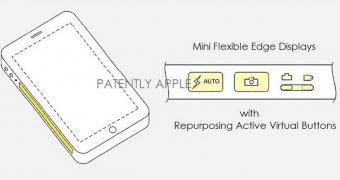The original iPhone came along with a dock. It was a simple, beautiful piece of plastic fitted with a charging port that was both holding your iPhone upright and charging or syncing it at the same time. Since then, Apple released a Dock but it sold it separately. Now the only way to keep your iPhone or iPad standing next to your computer is to buy a third-party dock.
Not that the third-party ones are not good, but none of them is as good looking and minimalistic as the first iPhone dock. Apparently, that doesn't prevent Apple from innovating in that field. And since the iPhone 6 will supposedly get rounder corners that will look like the original iPhone, one can only hope that Apple may reveal the new dock too.
A patent application coming from the Cupertino, California-based tech giant reveals some of the details surrounding the new dock. What makes it special is that the small lightning port connector is moving in such a way that it becomes unbreakable to force or just simple mistakes when sitting an iOS device on top of it.
The application granted by the US Patent and Trademark office was revealed by patentlyapple. They explain how Apple is trying to avoid the damages to the connector. Apple's engineers have noted that applying force on the lightning connector may break inside an iPhone or iPad, and it may even prove difficult to take the small receptacle out.
The new design allows for the small connector to move back and forth so that the iOS device can be inserted in different positions and it will not apply any force. Apple says this type of docking connectors can be used with multiple inputs, such as USB, FireWire or Thunderbolt.
Another newly revealed invention coming from Apple is related to a sidewall display used for active virtual buttons. Imagine that your iPhone may have a virtual button that can activate the camera app, turn the flash ON or OFF, or switch from photo to video.
Apple notes that the sides of the device can be covered in flexible displays that are bent from the front to the side. These can be used for virtual buttons like the ones mentioned above or informational displays that will supplement the frontal screen. Virtual buttons may also include lenses, haptic feedback components or small speakers.

 14 DAY TRIAL //
14 DAY TRIAL //